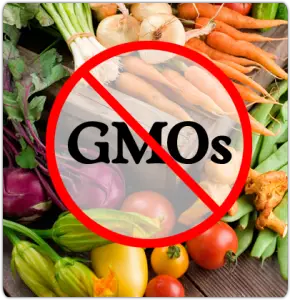By Sayer Ji – Wake Up World
One of the most disturbing, though commonly overlooked properties of genetically modified organisms (GMOs) is their documented ability to transfer genetic information horizontally into those who consume them.
This process actually occurs quite commonly in nature, especially among bacteria, which do not reproduce sexually and therefore have evolved a number of mechanisms through which to transfer genetic information directly between one another directly. Viruses themselves can essentially be described as ‘pieces of genetic information in search of chromosomes,’ their very “infectivity” being examples of horizontal gene transfer between species. The whole field of genetic engineering, in fact, would not exist were it not for the science and technology that harnesses and/or co-opts processes of horizontal gene transfer.
Technically speaking, horizontal gene transfer (also known as “lateral gene transfer“) is the process by which an organism incorporates genetic material from another organism without being the offspring of that organism. Vertical transfer, on the other hand, occurs when an organism receives genetic material from its ancestor, e.g., its parent or a species from which it has evolved.
Animal research published in 2003 in the journal of Environmental Biosafety Research showed that genetically modified lactic acid bacteria are capable of transferring recombinant genes sequences directly (horizontally) into Enteroccous faecalis, another naturally occurring species of digestive tract bacteria found in humans, as well.
Other animal research on orally ingested foreign DNA not only shows it is capable of transferring to, and/or altering genetic information within, the animal consuming it, but is also capable of affecting the genetics of the fetuses and newborn of pregnant mice who were fed it.
The existence of a free flow of genetic information from food to organism, and then transplacentally, to the organism’s future progeny, through horizontal gene transfer, illustrates just how true the age old phrase “you are what you eat” is — for better and for worse.
Perhaps more importantly is the revelation that there can be no “peaceful co-existence” between genetically modified foods and authentically natural ones, as the former by definition implies the irreversible transformation of the latter into itself. To state, as Whole Foods recently did, that co-existence is possible between GM and non-GM foods, is like saying pregnancy and virginity can co-exist, under natural circumstances.
I believe it is time to openly identify GM food for what it is. Because genetically modified foods can vectorize the dissemination of recombinant DNA sequences throughout the entire biosphere, as well as anyone who would consume them, they embody a virus-like quality of pathogenicity and could, without exaggeration, be identified as bioweapons of potential mass destruction.
About the Author Sayer Ji is the founder of GreenMedInfo.com, the world’s largest, evidence-based, open-source, natural medicine database. Follow him on Facebook or Twitter

If you've ever found value in our articles, we'd greatly appreciate your support by purchasing Mindful Meditation Techniques for Kids - A Practical Guide for Adults to Empower Kids with the Gift of Inner Peace and Resilience for Life.
In the spirit of mindfulness, we encourage you to choose the paperback version. Delve into its pages away from screen glare and notifications, allowing yourself to fully immerse in the transformative practices within. The physical book enriches the learning process and serves as a tangible commitment to mindfulness, easily shared among family and friends.
Over the past few years, Wake Up World has faced significant online censorship, impacting our financial ability to stay online. Instead of soliciting donations, we're exploring win-win solutions with our readers to remain financially viable. Moving into book publishing, we hope to secure ongoing funds to continue our mission. With over 8,500 articles published in the past 13 years, we are committed to keeping our content free and accessible to everyone, without resorting to a paywall.







